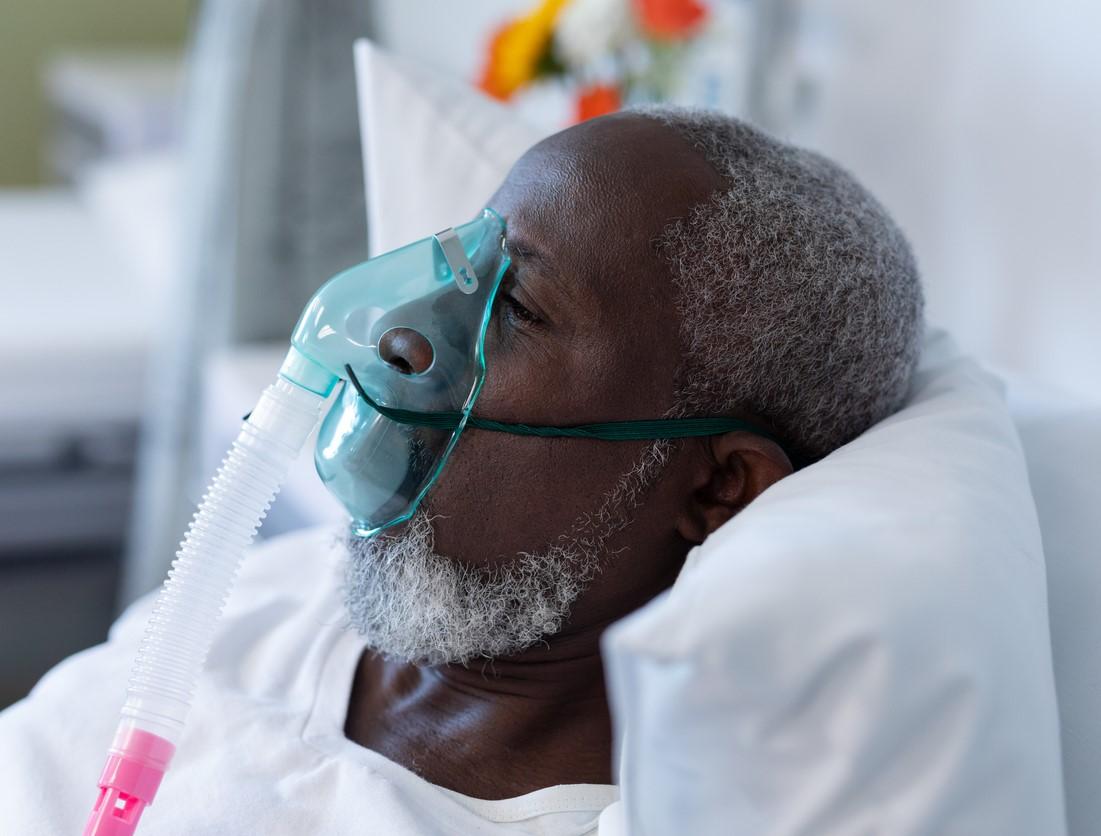Among more than 43,000 US veterans hospitalized for COVID-19, Black veterans had lower odds of receiving steroids, immunomodulatory drugs, and antivirals than their White counterparts, but the treatment disparities weren't tied to higher rates of death or readmission, finds a study published yesterday in JAMA Network Open.
A team led by University of Pittsburgh researchers retrospectively studied within- and between-hospital differences in the COVID-19 treatment regimens of 43,222 Black and White veterans hospitalized in 130 Department of Veterans Affairs medical centers from Mar 1, 2020, to Feb 28, 2022. Follow-up continued to May 1. A total of 28.1% of veterans were Black, 71.9% were White, 94.2% were men, and the median age was 71 years.
Similar rates of ICU admission
From Mar 1 to Sep 1, 2020, a phase dominated by wild-type SARS-CoV-2 and preceding the availability of COVID-19 vaccines, 4,869 patients (11.3% of the total sample) were hospitalized. The vast majority (38,353; 88.7%), though, were hospitalized from Sep 2, 2020, to Feb 28, 2022, during the pre-Delta, Delta-, and Omicron-predominant periods in which vaccines became available.
From Mar 1 to May 17, 2020, most hospitalized patients were Black, but the proportion of White patients rose over time. Among the 38,782 patients released from the hospital, 14.4% were readmitted within 30 days. In the earlier phases of the pandemic, 15.9% of patients died in the hospital, but this rate fell to 9.6% during the latter periods.
After adjustment for treatment site, Black patients were similarly likely to be admitted to an intensive care unit (ICU) as their White peers (39.6% vs 43.2%; within-center adjusted odds ratio [aOR], 0.95; 95% confidence interval [CI], 0.88 to 1.02).
But while two thirds of veterans given supplemental oxygen or noninvasive or invasive mechanical ventilation received systemic steroids such as dexamethasone, Black patients were 12% less likely than White patients to receive the drugs, even within the same hospital (within-center aOR, 0.88; 95% CI, 0.80 to 0.96 and between-center aOR, 0.67; 95% CI, 0.48 to 0.96).
Black veterans were also 11% less likely than their White counterparts to receive the antiviral drug remdesivir (within-center aOR, 0.89; 95% CI, 0.83 to 0.95 and between-center aOR, 0.68; 95% CI, 0.47 to 0.99) and immunomodulatory drugs (those that enhance or suppress the immune system, eg, tocilizumab; within-center aOR, 0.77; 95% CI, 0.67 to 0.87).
After controlling for patient demographics, underlying medical conditions, severity of infection, and receipt of COVID–specific drugs, Black race was not tied to greater odds of in-hospital death (within-center aOR, 0.98; 95% CI, 0.86 to 1.10) or 30-day readmission (within-center aOR, 0.95; 95% CI, 0.88 to 1.04).
Disparities not limited to COVID treatment
The study authors noted that long-term inequities in employment, income, housing, and healthcare access and differences in COVID-19 exposure risk and burden of chronic diseases have placed some minority racial and ethnic populations at higher risk of infection and death.
In a University of Pittsburgh press release, coauthor Florian Mayr, MD, MPH, said there should be no COVID treatment disparities—even if they don't result in higher death rates. "When entire hospitals are underperforming in providing evidence-based treatments, we can target hospital-wide interventions to address the problem," he said. "But correcting racial disparities in provision of treatment within hospitals requires a multilayer approach."
Mayr theorized that patient and family distrust of the medical community due to negative experiences with medical providers or health systems could be biasing consent for treatment and driving some of the disparities.
The researchers cautioned that because their study population consisted mostly of older men, their findings shouldn't be generalized to hospitals that treat younger populations and more women, though it would be a worthy topic for research in those hospitals.
Lead author Alexander Castro, a fourth-year medical student at the University of Pittsburgh, said that such disparities go beyond COVID-19 treatment. "It's happening in sepsis, pneumonia, and hospital-acquired infections, among other measures," he said. "It is a multifaceted issue without easy solutions, making it one of the most difficult—and most important—questions facing clinical research."
Mayr said that approaches to reducing the disparities could include employing a more racially diverse mix of clinicians, surveying physicians to better understand their treatment decisions, and investigating whether devices like thermometers and pulse-oximeters, which studies have suggested may not work as well in darker-skinned patients, could be unduly influencing treatment decisions.




















